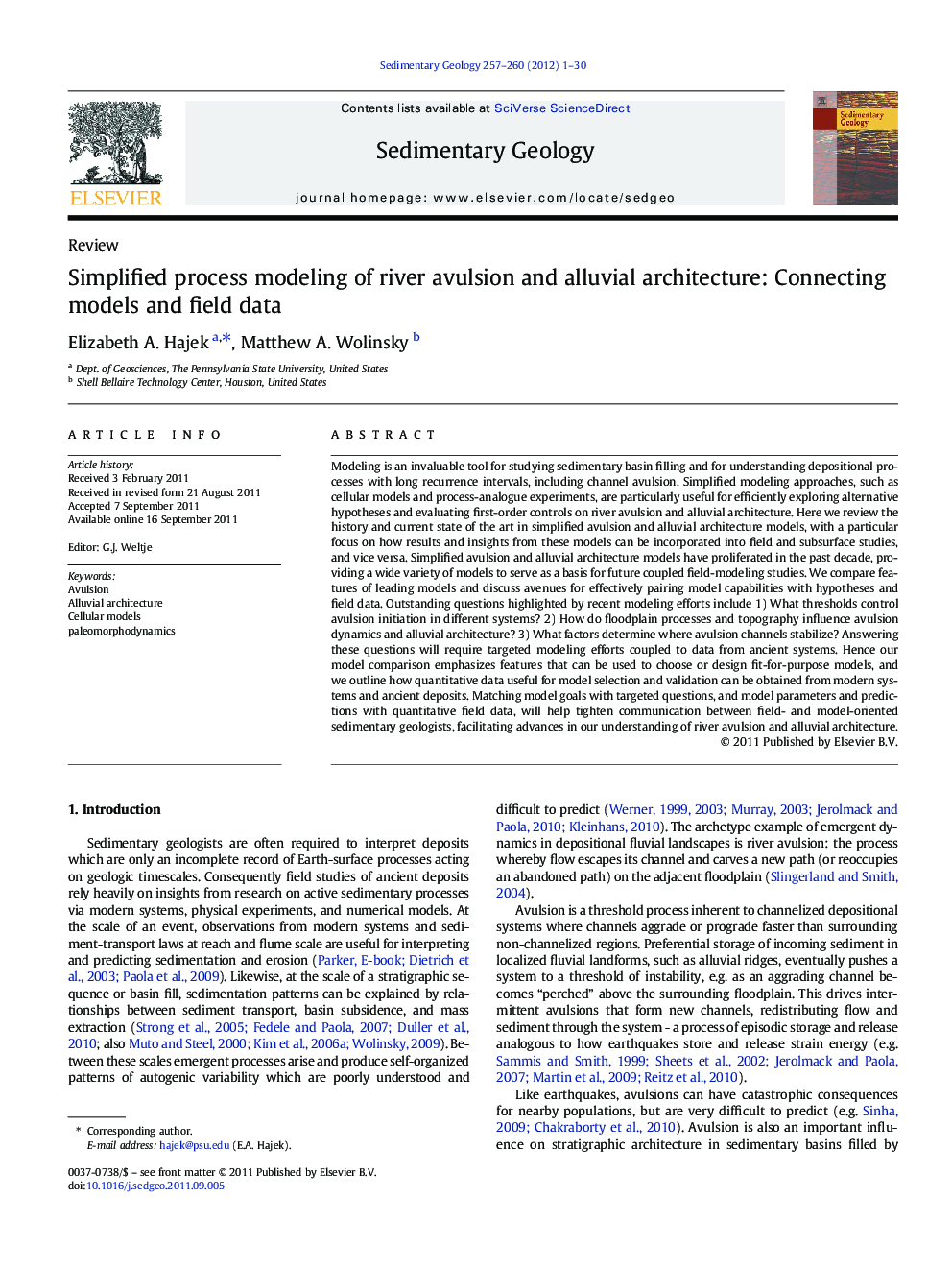| Article ID | Journal | Published Year | Pages | File Type |
|---|---|---|---|---|
| 4689810 | Sedimentary Geology | 2012 | 30 Pages |
Modeling is an invaluable tool for studying sedimentary basin filling and for understanding depositional processes with long recurrence intervals, including channel avulsion. Simplified modeling approaches, such as cellular models and process-analogue experiments, are particularly useful for efficiently exploring alternative hypotheses and evaluating first-order controls on river avulsion and alluvial architecture. Here we review the history and current state of the art in simplified avulsion and alluvial architecture models, with a particular focus on how results and insights from these models can be incorporated into field and subsurface studies, and vice versa. Simplified avulsion and alluvial architecture models have proliferated in the past decade, providing a wide variety of models to serve as a basis for future coupled field-modeling studies. We compare features of leading models and discuss avenues for effectively pairing model capabilities with hypotheses and field data. Outstanding questions highlighted by recent modeling efforts include 1) What thresholds control avulsion initiation in different systems? 2) How do floodplain processes and topography influence avulsion dynamics and alluvial architecture? 3) What factors determine where avulsion channels stabilize? Answering these questions will require targeted modeling efforts coupled to data from ancient systems. Hence our model comparison emphasizes features that can be used to choose or design fit-for-purpose models, and we outline how quantitative data useful for model selection and validation can be obtained from modern systems and ancient deposits. Matching model goals with targeted questions, and model parameters and predictions with quantitative field data, will help tighten communication between field- and model-oriented sedimentary geologists, facilitating advances in our understanding of river avulsion and alluvial architecture.
